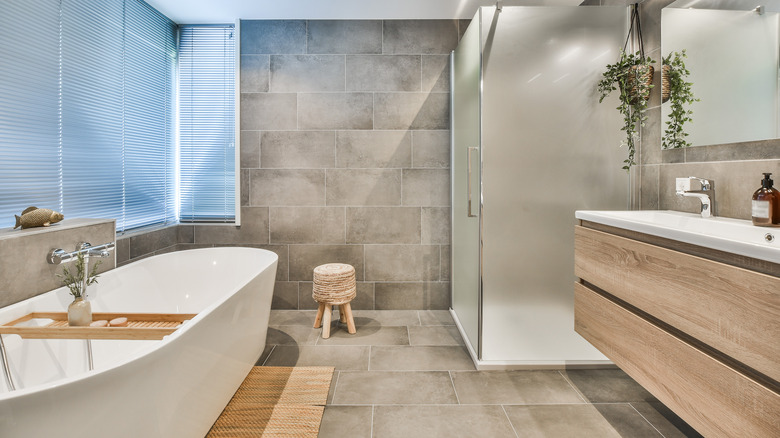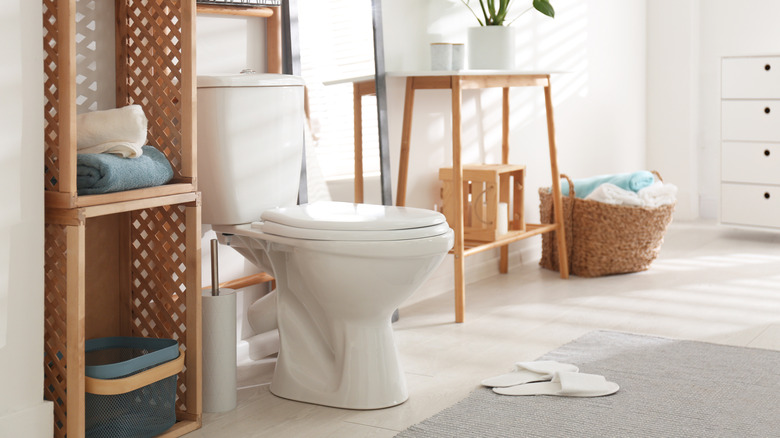The Real Reason That Your Water Bill Is Through The Roof
Every bill-paying adult has had the experience of receiving a bill, whether it be for a cell phone, water, or electricity, and wondered what on earth caused the price to skyrocket for that particular span of time. Luckily, when it comes to your water bill, there are a few common culprits that just might solve the puzzle — and allow you to make adjustments or repairs so you're not faced with a sky-high bill a second month in a row.
One of the first things to check if you've received an unexpectedly high water bill is the toilets; in the average American home, they account for about 31% of the water use, which means any issues with the toilet could be disastrous and add a staggering amount to your overall water bill, per Express Sewer & Drain. If you move to a new place and find the water bill is higher than you're accustomed to, the culprit could simply be the toilet's age — older models often don't have the same water-saving features as modern toilets do.
While you're in the bathroom checking on the toilet, another common spot that can drive up your water bill is the sink and other fixtures like shower heads or the faucet in the tub. Any of these could potentially have a leak, and even at a seemingly inconsequential rate of one drip per second, about 17 gallons can get wasted during the course of a single day.
How to check to see if you have a leak
In fixtures like faucets or shower heads, the way to check whether there's a leak present is quite simple: You should be able to see it dripping away, clueing you in to the fact that there's something to fix. However, with toilets, it can be a bit trickier. There are a few methods to check before you rush to call the plumber, though.
The first, and easiest, is to use your ears the same way you would use your eyes for faucets. Turn off any other noise-creating devices until you have a quiet bathroom, and sidle up to your toilet to have a listen, suggests Express Sewer & Drain. Any strange hissing noises could hint at a leak somewhere in the toilet, which you'd want to explore further. Second, if the hiss test doesn't really work out or reveals no issues, you can get a dye tablet or food coloring and place it in the tank of your toilet. Within about 15 to 20 minutes, check the toilet bowl and see if the water is clear, or if it's tinted by the dye you put in. Colorful liquid in the bowl during this little experiment is a sign that there's an issue somewhere that is allowing the water in the tank to leak into the toilet bowl.

